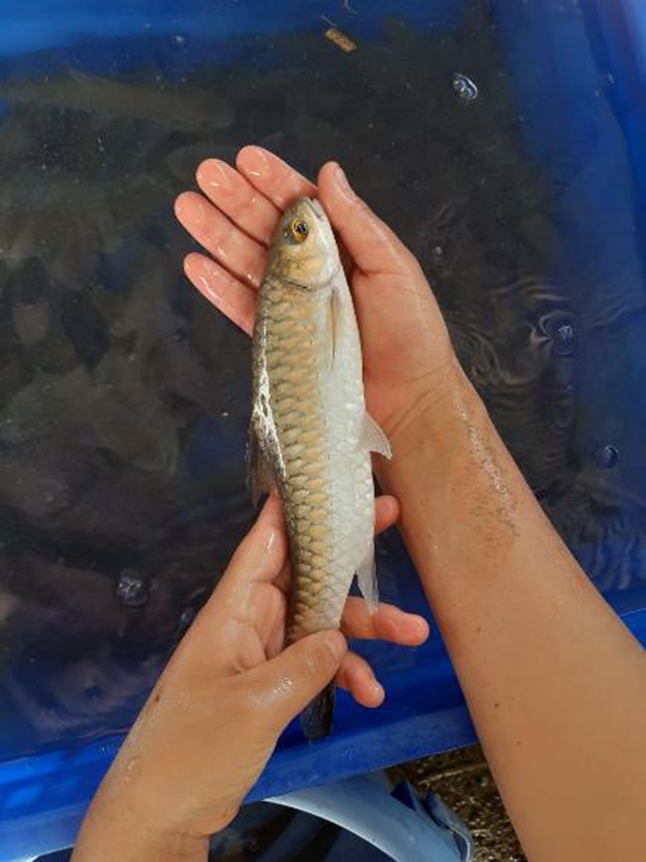EFFECT OF DIFFERENT STOCKING DENSITIES ON THE GROWTH PERFORMANCE, SURVIVABILITY AND LENGTH-WEIGHT RELATIONSHIP OF JUVENILE CHOCOLATE MAHSEER, NEOLISSOCHILUS HEXAGONOLEPIS (McClelland, 1839)
Keywords:
Chocolate mahseer, growth performance, length-weight relationship, stocking densityAbstract
This study examined the effect of different stocking densities on the growth performance, survivability, and length-weight relationship of juvenile Chocolate mahseer (Neolissochilus hexagonolepis). Three 74m3 concrete tank (10m × 4.9m × 1.5m) were assigned to treatments: T1(1 juvenile/m3; n = 74), T2 (2 juvenile/m3; n = 148), and T3 (3 juvenile/m3; n = 222) in a completely randomized design. Juveniles were fed twice daily at 2% of their total biomass. The body weight and body lengths were measured at day 0 and after every 30 days for 90 days. Likewise, pH, dissolved oxygen, and temperature of the water were recorded twice daily for all treatments. Survivability reached 100% across treatments. The overall mean percentage weight gain was significantly higher in T1 (26.02 ± 4.52 %) and T2 (26.02±4.99 %) compared to T3 (8.34±1.29 %) (p >.05). The overall mean percentage length gain was significantly higher in T1(12.71±2.17%) followed by T2 (6.49±1.34%) (p < 0.05). Likewise, specific growth rate (%/day) was significantly higher in T1 (0.20±0.04 %) and T2 (0.14±0.04 %) compared to T3 (0.07±0.01 %) (p < 0.05). Overall feed conversion ratio was significantly lower in T1 (6.47) and T2 (6.81) compared to T3 (29.26) (p < 0.05). The juveniles showed different degrees of negative allometry. The allometric form of the length-weight relationship equation was established as W = e−1.62 × L2.01 for T1, W = e−3.81 × L2.74 for T2, and W = e0.28 × L1.40 for T3. Observed water quality parameters did not differ significantly among treatments (p > 0.05). A cross-sectional cost-benefit analysis showed T1 had a better economic benefit than T2 and T3. The study recommends T1 as the optimal stocking density for better growth performance, feed conversion, and economic return.

Downloads
Published
License
Copyright (c) 2024 Bhutan Journal of Animal Science

This work is licensed under a Creative Commons Attribution 4.0 International License.





